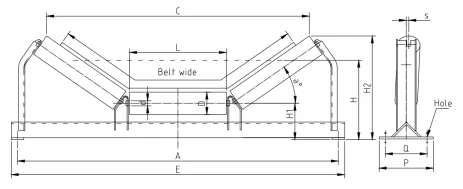 Afrikaans
Afrikaans  Albanian
Albanian  Amharic
Amharic  Arabic
Arabic  Armenian
Armenian  Azerbaijani
Azerbaijani  Basque
Basque  Belarusian
Belarusian  Bengali
Bengali  Bosnian
Bosnian  Bulgarian
Bulgarian  Catalan
Catalan  Cebuano
Cebuano  Corsican
Corsican  Croatian
Croatian  Czech
Czech  Danish
Danish  Dutch
Dutch  English
English  Esperanto
Esperanto  Estonian
Estonian  Finnish
Finnish  French
French  Frisian
Frisian  Galician
Galician  Georgian
Georgian  German
German  Greek
Greek  Gujarati
Gujarati  Haitian Creole
Haitian Creole  hausa
hausa  hawaiian
hawaiian  Hebrew
Hebrew  Hindi
Hindi  Miao
Miao  Hungarian
Hungarian  Icelandic
Icelandic  igbo
igbo  Indonesian
Indonesian  irish
irish  Italian
Italian  Japanese
Japanese  Javanese
Javanese  Kannada
Kannada  kazakh
kazakh  Khmer
Khmer  Rwandese
Rwandese  Korean
Korean  Kurdish
Kurdish  Kyrgyz
Kyrgyz  Lao
Lao  Latin
Latin  Latvian
Latvian  Lithuanian
Lithuanian  Luxembourgish
Luxembourgish  Macedonian
Macedonian  Malgashi
Malgashi  Malay
Malay  Malayalam
Malayalam  Maltese
Maltese  Maori
Maori  Marathi
Marathi  Mongolian
Mongolian  Myanmar
Myanmar  Nepali
Nepali  Norwegian
Norwegian  Norwegian
Norwegian  Occitan
Occitan  Pashto
Pashto  Persian
Persian  Polish
Polish  Portuguese
Portuguese  Punjabi
Punjabi  Romanian
Romanian  Russian
Russian  Samoan
Samoan  Scottish Gaelic
Scottish Gaelic  Serbian
Serbian  Sesotho
Sesotho  Shona
Shona  Sindhi
Sindhi  Sinhala
Sinhala  Slovak
Slovak  Slovenian
Slovenian  Somali
Somali  Spanish
Spanish  Sundanese
Sundanese  Swahili
Swahili  Swedish
Swedish  Tagalog
Tagalog  Tajik
Tajik  Tamil
Tamil  Tatar
Tatar  Telugu
Telugu  Thai
Thai  Turkish
Turkish  Turkmen
Turkmen  Ukrainian
Ukrainian  Urdu
Urdu  Uighur
Uighur  Uzbek
Uzbek  Vietnamese
Vietnamese  Welsh
Welsh  Bantu
Bantu  Yiddish
Yiddish  Yoruba
Yoruba  Zulu
Zulu feeder idler
Understanding Feeder Idlers Key Components in Material Handling
In the realm of material handling and processing, feeder idlers play a crucial role in ensuring smooth and efficient operations. These devices are often overlooked but are essential in a wide array of industries, including mining, manufacturing, and construction. This article delves into the functional significance of feeder idlers, their designs, and how they contribute to improved productivity and operational efficiency.
What are Feeder Idlers?
Feeder idlers are cylindrical rollers that support and guide conveyor belts, specifically in applications where materials need to be fed into a system in a controlled manner. They are critical in maintaining the alignment and tension of the belt, which is vital for the efficient movement of materials from one point to another. By ensuring a continuous flow of materials, feeder idlers minimize downtime and enhance the overall throughput of operations.
The Role of Feeder Idlers in Conveyor Systems
Feeder idlers serve several key functions in conveyor systems
1. Material Division and Regulation In many industrial processes, materials must be handled carefully to maintain the integrity of both the product and the equipment. Feeder idlers help regulate the flow of materials onto the conveyor belt, preventing clogs and ensuring that the right amount of product is delivered to subsequent processing stages.
2. Prevention of Slippage Modern feeder idlers are engineered to reduce slippage, which can lead to uneven wear on the conveyor system. By maintaining belt tension and alignment, they contribute to more predictable and reliable materials handling.
3. Support System The structural support provided by feeder idlers is essential in maintaining the longevity of conveyor systems. They assist in distributing the weight of heavy materials evenly across the conveyor, thus preventing premature wear and tear.
4. Vibration Reduction A well-designed feeder idler can absorb and dampen vibrations from the material being loaded onto the conveyor belt. This function helps protect both the belt and the equipment and enhances the overall operational stability of the material handling system.
feeder idler

Design Variations and Their Applications
Feeder idlers come in various designs tailored to meet specific requirements. The choice of design often depends on factors such as the type of material being handled, the speed of the conveyor, and the operating environment. Common types of feeder idlers include
- Trough Idlers These are widely used in bulk material handling applications where they support conveyor belts that transport materials in a 'trough' shape.
- Return Idlers Positioned on the return side of the conveyor belt, these idlers guide the belt back to the loading point and maintain tension.
- Impact Idlers Designed to absorb the energy of falling materials, these idlers protect the conveyor system and ensure a smooth transition of materials into the belt.
Importance of Regular Maintenance
Despite their robust design, feeder idlers require regular maintenance to ensure optimal performance. Lubrication of bearings, checking for wear and tear, and alignment adjustments are critical to preventing breakdowns. Neglecting maintenance can lead to slippage, misalignment, and ultimately, costly downtimes.
Conclusion
Feeder idlers, though relatively simple in design, are vital components in a variety of material handling systems. They play a significant role in the efficiency and reliability of conveyor operations. Understanding their functions and implementing proper maintenance strategies can result in enhanced productivity and reduced operational costs. Whether in a manufacturing plant or a mining site, ensuring the optimal performance of feeder idlers is essential to the smooth flow of materials and the overall success of industrial operations. By investing in quality idlers and regular upkeep, businesses can achieve greater efficiency and reliability in their material handling processes.
-
Wing Pulley Conveyor for Conveyor Belt MaintenanceNewsJun.16,2025
-
Self Cleaning Spiral Idler for Conveyor DesignNewsJun.16,2025
-
Pulley Lagging for Conveyor Belt AlignmentNewsJun.16,2025
-
Impact Idlers Used in Belt Conveyor for PerformanceNewsJun.16,2025
-
Ceramic Lagging Conveyor Pulley for Conveyor Belt SystemsNewsJun.16,2025
-
Belt Conveyor Idler for Heavy-Duty ApplicationsNewsJun.16,2025





























